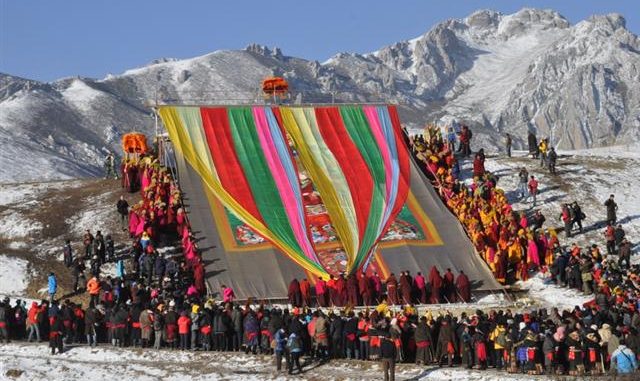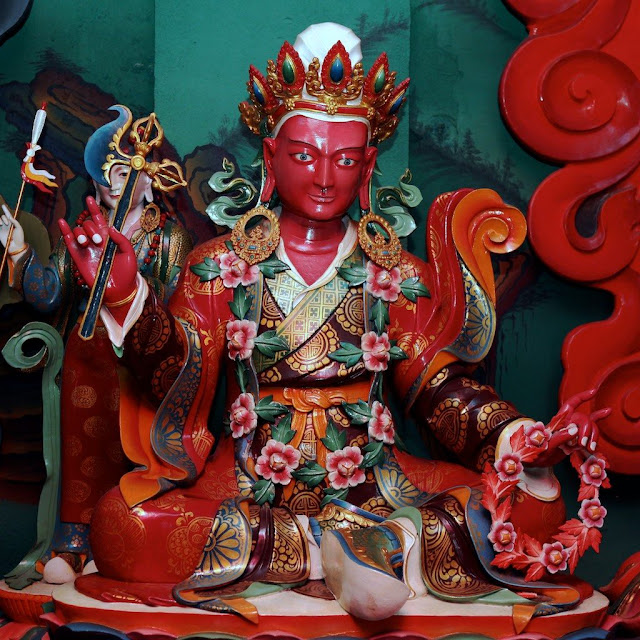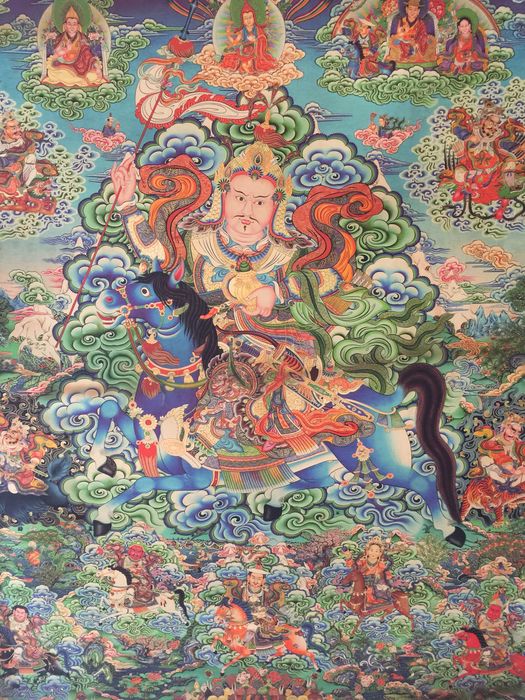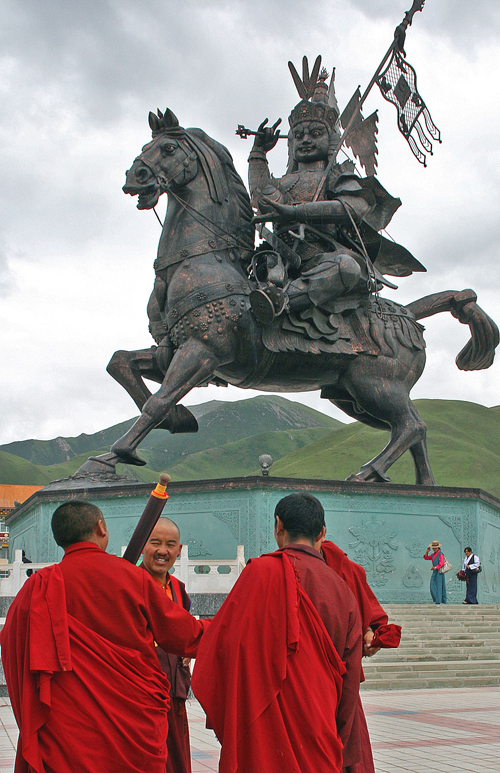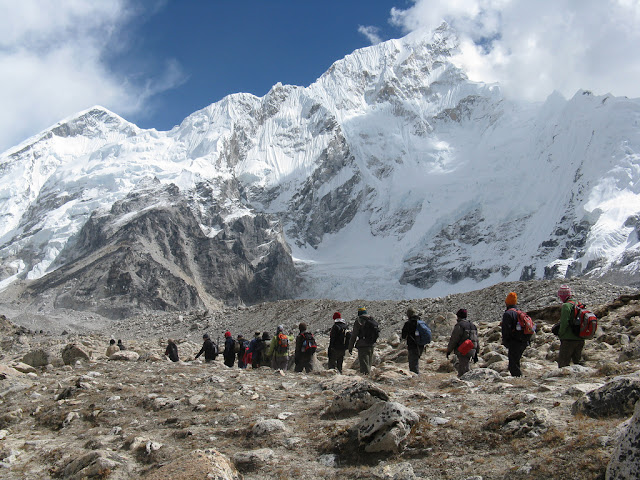What is the favourable and unfavourable days for hair cutting in the Tibetan lunar calendar? Cutting one's hair on these days will lead to a loss of vitality.
Tibetan calendar is based on the Moon phases and it is not possible to transfer it directly into Gregorian system, because due to precise calculation every year, certain days are omitted (e.g. after the third lunar day, the fifth one follows), or doubled (e.g. there are two forth days, one after another).
Consequently, the tenth day after the new moon (calculated according to western calendar), for instance, doesn't always correspond to the tenth day of the lunar calendar; it may be the eighth or the eleventh day – depending on omitted or doubled day before.
Below, there are dates of favourable and unfavourable days for hair cutting. The dates were taken from the calendar by Tibetan astrologists, including changes (omitted or doubled days) mentioned above.
Favourable days of the lunar month for cutting the hair are:
The 8th to bring longevity - December 15, January 14, 2019, February 13, 2019
The 9th to bring attractive energy - December 16, January 15, 2019, February 14, 2019
The 10th to bring magnetism - December 17, January 16, 2019
The 11th to bring intelligence - December 18, January 17, 2019 February 15, 2019
The 26th to bring happiness - December 3 & 4 , January 1 & 2, 2019 January 13, February 01, March 2 &3, 2019
The 27th to bring happiness - December 3 & 4 , January 1 & 2, 2019 January 13, February 01, March 2 & 3, 2019
The 9th to bring attractive energy - December 16, January 15, 2019, February 14, 2019
The 10th to bring magnetism - December 17, January 16, 2019
The 11th to bring intelligence - December 18, January 17, 2019 February 15, 2019
The 26th to bring happiness - December 3 & 4 , January 1 & 2, 2019 January 13, February 01, March 2 &3, 2019
The 27th to bring happiness - December 3 & 4 , January 1 & 2, 2019 January 13, February 01, March 2 & 3, 2019
Unfavourable days of the lunar month for cutting the hair are:
The 1st, 2nd, 7th, 12th, 16th, 18th, 21st, 25th, 28th and 29th days of the lunar month. Cutting one’s hair on these days will lead to a loss of vitality.
Results of cutting hair on different days according to the Tibetan lunar calendar and custom:
1st day - short life
2nd day - slander / One will have many diseases
3rd day - wealth
4th day - increase in virtue
5th day - increase in wealth
6th day - lawsuit (court case)
7th day - one's body complexion will disappear
8th day - long life
9th day - attractive energy
10th day - greater wang tang (great power)
11th day - intelligence
2nd day - slander / One will have many diseases
3rd day - wealth
4th day - increase in virtue
5th day - increase in wealth
6th day - lawsuit (court case)
7th day - one's body complexion will disappear
8th day - long life
9th day - attractive energy
10th day - greater wang tang (great power)
11th day - intelligence
13th day - increased longevity
14th day - increased comfort and wealth
15th day - auspiciousness
16th day - obstacles
17th day - the color of your flesh will turn blue
18th day - one's will receive possession
19th day - increase in longevity / meet good people will help you
20th day - hunger and thirst
21st day - fear of sickness
22nd day - gaining clothes and food
23rd day - increase in comfort and wealth
24th day - sore eyes
25th day - sickness
26th day - well being and happy
27th day - one's virtue will increase
28th day - strife and quarrels
29th day - one's life / spirit potential will wander
30th day - purification of negative actions and obscurations
14th day - increased comfort and wealth
15th day - auspiciousness
16th day - obstacles
17th day - the color of your flesh will turn blue
18th day - one's will receive possession
19th day - increase in longevity / meet good people will help you
20th day - hunger and thirst
21st day - fear of sickness
22nd day - gaining clothes and food
23rd day - increase in comfort and wealth
24th day - sore eyes
25th day - sickness
26th day - well being and happy
27th day - one's virtue will increase
28th day - strife and quarrels
29th day - one's life / spirit potential will wander
30th day - purification of negative actions and obscurations
Do you earnestly cherish our devoted work? Assuming this is the case, we are delighted that you are finding our blog useful and valuable. Would you consider making a donation for our Buddhist research and development?
We need your help to secure the future of scholarly interaction with Buddhism. Since our very first publication of Dharma works and activities in the year 2008, we had been effortlessly providing free distribution of Dharma posts and articles throughout the previous 10 years. We have exceptionally constrained supports and do not receive subsidized or funding from people in general.
Please help us and to develop our Dharma activities that will not only benefit you, but to all Dharma readers on the planet. Please consider showing your support. Your generosity will certainly help us to enhance our work and to accomplish for a better and brighter prospect to come.
Thank you for reading, may you find peace and great bliss. With your support it helps to spread the Buddha’s precious teachings and turning the Dharma wheels in the world.
Aspiration For Bodhichitta
For those in whom the precious Bodhichitta has not arisen
May it arise and not decrease
But increase further and further.
Dedication of Merit
By this merit may we obtain omniscience then.
Having defeated the enemies wrong-doings.
May we liberate migratory from the ocean of existence.
With its stormy waves of birth, old age, sickness and death.
*Note
I do not own or infringe any copyright of the picture(s).
Picture(s) courtesy and credit to the rightful distributors and or studios.
Picture(s) is/are intended for editorial use only.
Aspiration For Bodhichitta
For those in whom the precious Bodhichitta has not arisen
May it arise and not decrease
But increase further and further.
Dedication of Merit
By this merit may we obtain omniscience then.
Having defeated the enemies wrong-doings.
May we liberate migratory from the ocean of existence.
With its stormy waves of birth, old age, sickness and death.
*Note
I do not own or infringe any copyright of the picture(s).
Picture(s) courtesy and credit to the rightful distributors and or studios.
Picture(s) is/are intended for editorial use only.


















